Bike to Work 3: Separate or Equal?
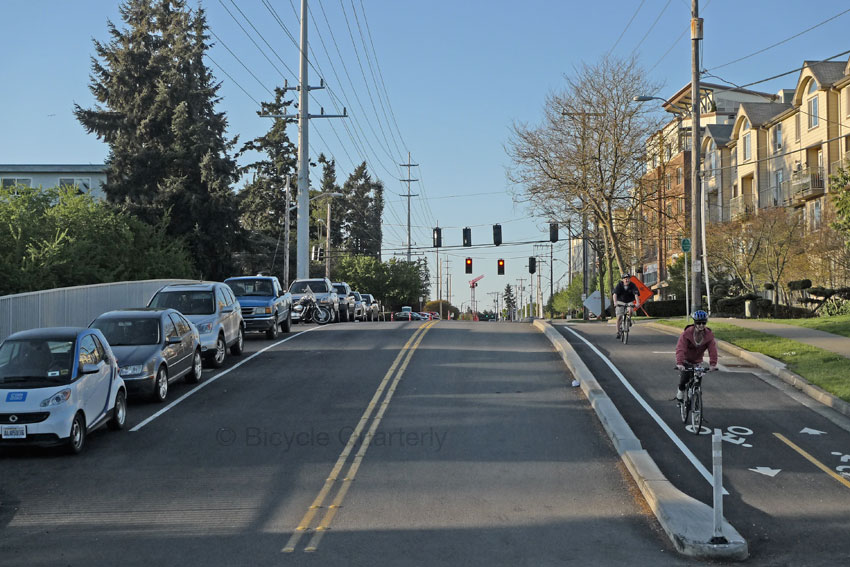
In recent years, there has been a worrisome trend in the U.S. to advocate for separate bike paths (“cycle tracks”), or at least some visual barrier between bike and car lanes. An organization called “Bikes Belong” advocates for “protected bike lanes.” Recently in Seattle, guerilla cyclists installed pylons to separate a bike lane from the car lanes. Why do I call this worrisome?
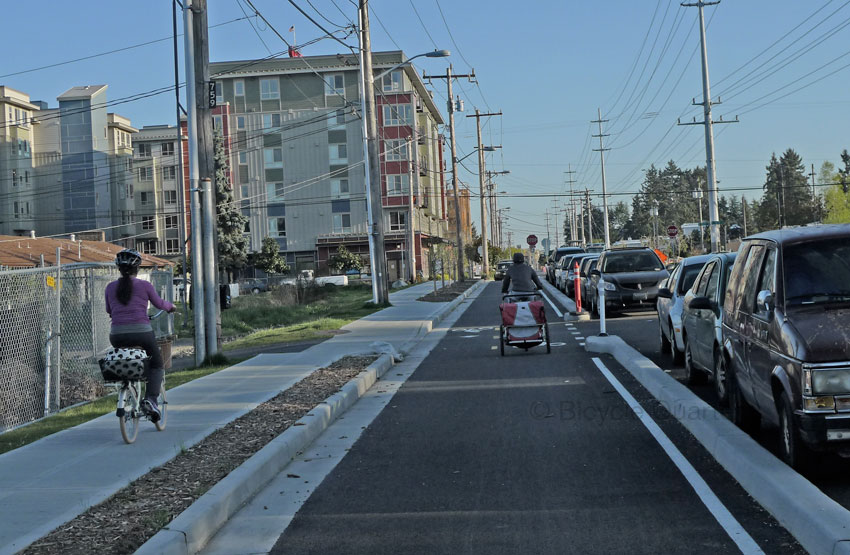
At first sight, separate bike paths seem appealing. You are away from cars, riding by yourself. (The photo above shows that some riders still don’t feel safe on blacktop and prefer the sidewalk.)
Unfortunately, this idyllic view hides some very real dangers.
To understand bicycle safety, it is important to look at the actual, rather than perceived, dangers. The danger of being hit from behind or being “clipped” by a car passing too close is very small. It accounts for less than 5% of car-bike accidents.
Most accidents involving bikes and cars occur at intersections. Leaving aside accidents that are the cyclist’s fault (and thus more easily avoidable), there are three common scenarios:
- A car pulls out of a side street and doesn’t notice the approaching cyclist who has the right of way.
- A car is about to turn right and doesn’t realize that there is a cyclist traveling in the same direction in their blind spot on the right. The car cuts off the cyclist, often with fatal consequences.
- A car turns left and doesn’t notice an oncoming cyclist. The car turns into the cyclist’s path.
In all cases, the driver did not notice the cyclist. This is the greatest danger for cyclists: being overlooked in traffic. Since drivers usually scan the road for cars, cyclists are safest if they ride where drivers look for cars. To be safe, cyclists must be an equal part of traffic.
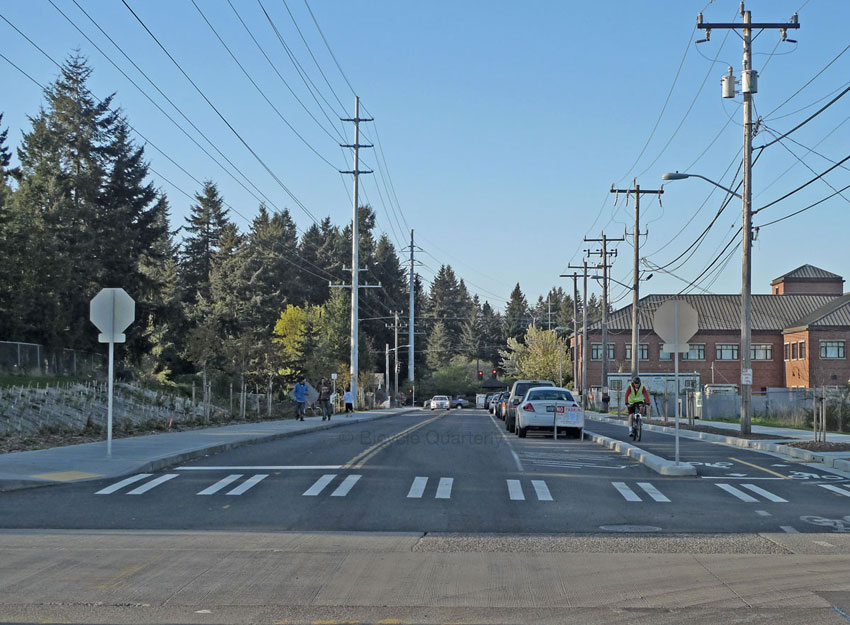
Look at this view from a car windshield. You plan to turn right at this intersection. You see a car far ahead, but otherwise, everything appears clear. Will you realize there is a separate lane coming toward you, on the far right? Even though the cyclist is wearing a yellow vest, he is not in your immediate field of vision. A few moments earlier, the cyclist was completely hidden behind the parked cars. (At least the city doesn’t allow parking close to the intersection here.)
This photo also shows how misleading the term “protected bike lane” is. The protection ends right where you face the greatest danger: at the intersection.
Any barrier that separates the cyclist visually from other traffic effectively hides the cyclist. This is counterproductive to safety. Moving cyclists out of the roadway altogether, on separate bike paths, is even more dangerous, because drivers don’t look for (or cannot see) cyclists off to the side.
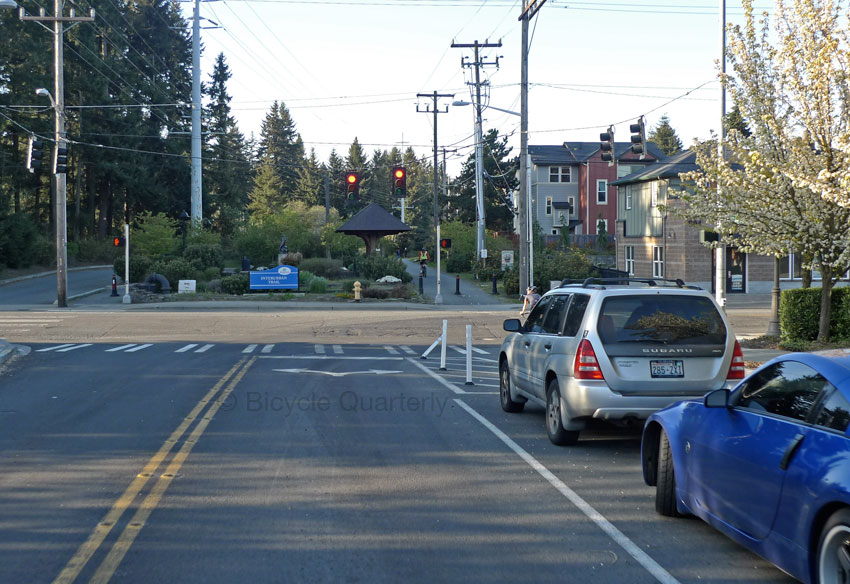
Imagine planning a right turn in the image above. You approach the intersection, the light turns green, you go. If you are vigilant, you can barely see the cyclist behind the parked car. Now imagine if the cyclist was still a bit further back. She’d be invisible. You’d turn right into her path. Let’s hope she has good brakes!
These are not hypothetical concerns. The police department in Berlin, Germany, found that on streets where “protected bike paths” were installed, the frequency of cycling accidents greatly increased. (The results are significant even when corrected for various factors, such as an increased number of cyclists traveling on these routes.)
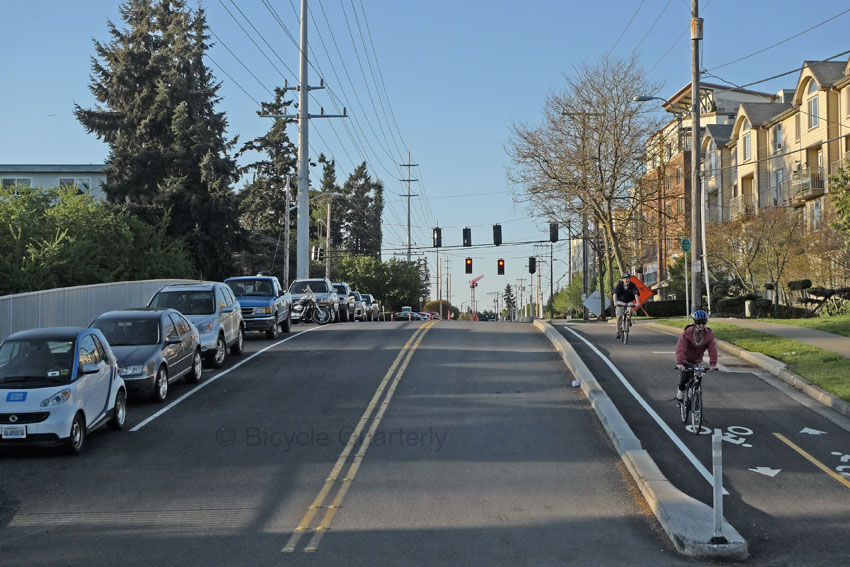
In addition, this particular separate bike facility is counter to what we’ve taught cyclists for decades: it is dangerous to ride facing traffic. Doing so remains dangerous, even if the bike lane asks you to do so. And if you refuse to ride there, you incur the wrath of motorists. While riding around to take these photos, I had one elderly lady lean out of the window of her Buick and yell: “Now get in your bike lane!”
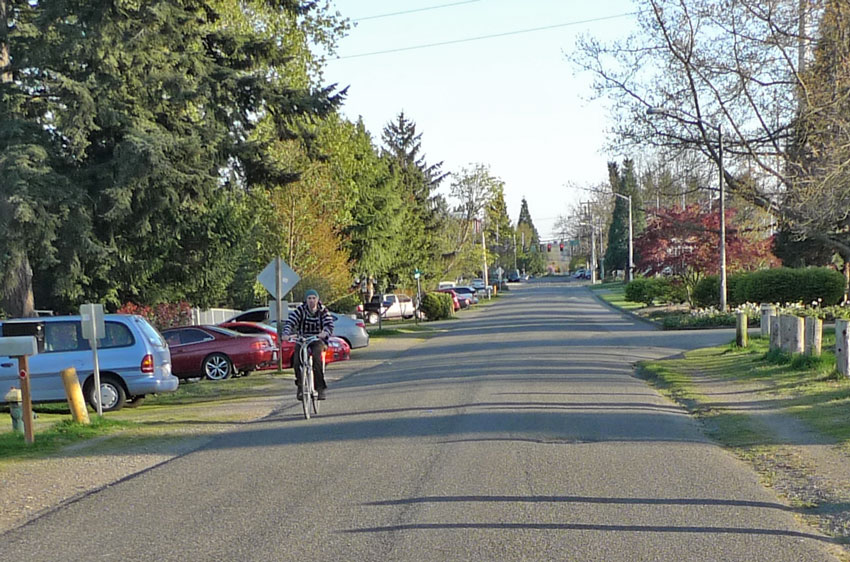
A little further down the hill, the city hasn’t constructed the bike path yet (above). Riders ride on the street, where they are visible and expected. This is much safer than the separate bike path. If I were a driver planning a left turn into a driveway here, the cyclist would be right where I look for oncoming traffic. (Moving a little closer to the center of the street would make him even more visible.) I use this street frequently, and I am not looking forward to being pushed onto a segregated bike path on the wrong side of the street!
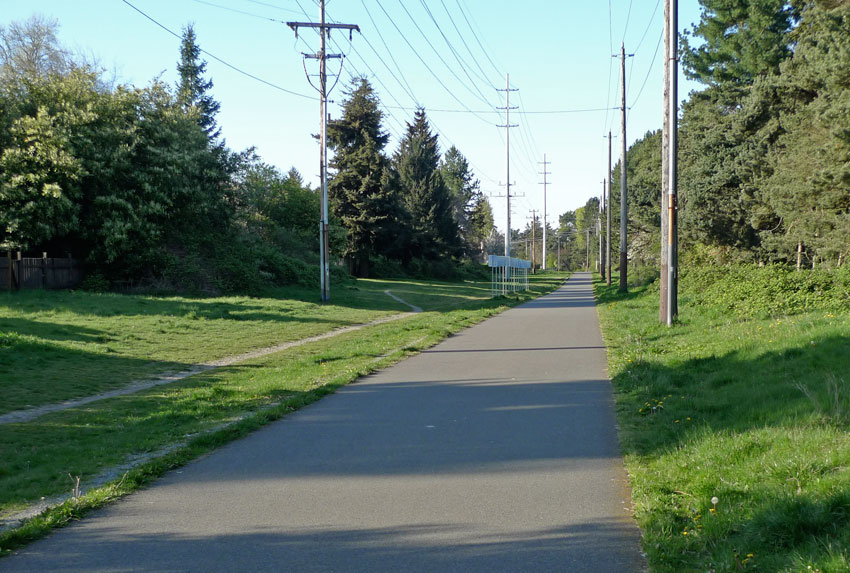
Separate paths are useful and safe where there are no intersections (above). Cross-country paths can provide a relaxing and safe alternative to busy highways. Trails like these also can be a good place to ride with children who are not yet in full control of their bicycle. (As long as there is little foot and bicycle traffic – busy trails with erratic users are the worst place for novice cyclists.)
On streets with frequent intersections, separate paths only make cycling less safe. I wish those who advocate for them would look at the data and stop asking for facilities that will cause more accidents.
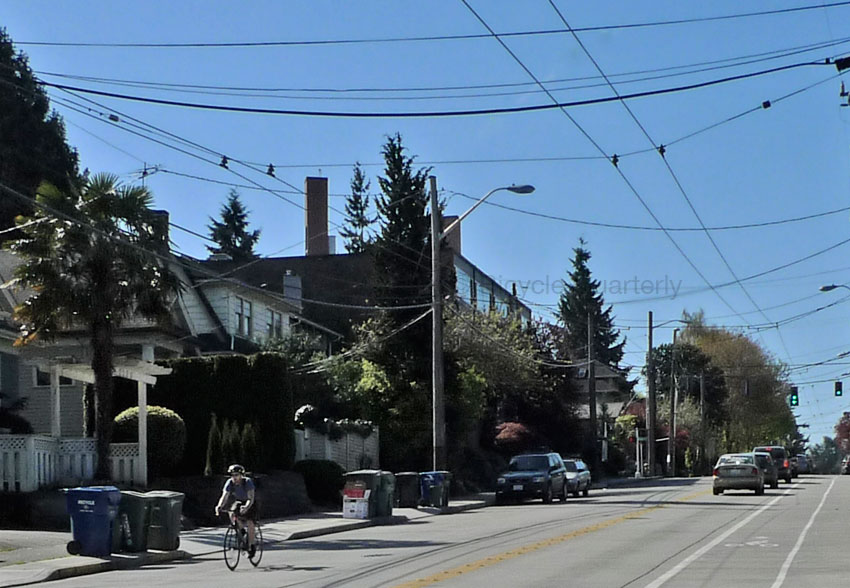
An on-street bike lane (above, on uphill right side) is a much better solution to separating bicycles and cars. It keeps cyclists on the roadway as a legitimate part of traffic. To novice cyclists, it may be disconcerting to be passed by fast-moving cars, but it is safer to be an equal part of traffic than to pop out from unexpected places as you cross intersections on a separate path.
Separate cycle paths are appealing to many cycling advocates because they exist all over Europe. And in Europe, more people cycle, and cycling is safer. So it’s easy to think that the cycle paths are the reason for cycling’s success in Europe.
Having lived in Europe, I believe that cycling there is successful in spite of (and not because of) the bike paths. It may help to know that separate bike paths originally were not introduced to make cycling better, but to clear the road for cars during the 1930s (by the car-obsessed Nazi government in Germany). For that reason, cyclists were required by law to use the bike path, whether it was well-designed or not. Other European countries quickly followed this “innovation.” It spread to yet more countries when Germany invaded much of Europe during World War II.
As early as 1936, the French Cyclotouring Federation lobbied for bike lanes painted on the road, instead of mandatory, but dangerous, bike paths. In Europe, that battle still is going on more than 75 years later, because the Nazi-era laws remain on the books to this day, even in cycling-friendly places like Amsterdam and Copenhagen. (To be clear, I am not implying that those advocating for separate paths should be in any form compared to Nazis. I only included this for a historic perspective on why European cyclists are required to cycle on segregated facilities.)
As North American cyclists, we are lucky that we retain the right to use the road. Let’s not give it up!
Addition: The discussion in the comments was summarized in another post.
Further reading: The most common bicycle accidents.


